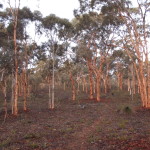03 Nov Call for Contributions – Landscapes Journal
Landscapes: the Journal of the International Centre for Landscape and Language
Issue: Ecotones as Contact Zones: Reading Landscape Intersections
Submissions due: 18 November 2015
The Summer 2015/16 issue of Landscapes seeks critical essays, creative non-fiction, poetry, photography and artwork of a broadly interdisciplinary nature that explore the many intersections in and of landscapes: human and non-human, microscopic and macroscopic, virtual and embodied, ecological and cultural. We are especially interested in the theme of ecotones as contact zones—as realms of becoming and belonging where species and cultures mix, mingle, and migrate, recombine and hybridise.
In When Species Meet (2008), Donna Haraway develops the idea of contact zones, applying it across scales of ecological intersection. For Haraway, a contact zone signifies “how subjects are constituted in and by their relations to each other […] It treats the relations […] in terms of co-presence, interaction, interlocking understandings and practices, often within radically asymmetrical relations of power” (216). Extending contact zones to the ecological principle of ecotones, Haraway further highlights “edge effects […] where assemblages of biological species form outside their comfort zones” and where diversity and hybridisation of all kinds (historical, cultural, ecological, evolutionary) emerges.
For the past 25 years, ecocriticism has been the theoretical domain for considerations of becoming and belonging in place. However, the tendency to valorise practices of local inhabitation, well documented by Ursula Heise (2008), exposes the limitations of this approach—and the need for critical hybridisation. The proposed issue of Landscapes will provide a textual ecotone for methodological, disciplinary and artistic combinations that consider the interlocking edges where local meets global, sea meets land, human meets more-than- human, digital meets analogue, language meets DNA, parasite meets host, Google meets earth.
We invite broad interpretations of the issue theme in both critical and creative work, including, but not limited to, the following:
• Posthumanism, animal studies, critical plant studies
• New materialism, object-oriented ontology, thing theory, ANT
• Contact zones in practice-led research and creative methodologies
• Critical regionalism, bioregionalism and geographies of belonging
• Affective encounters, topophilia, solastalgia
• Embodied aesthetics and digital-biological interfaces
• BioArt, foundArt, performativity, ambience
• Eco-semiotics, translation, communication
• Hybridity in ecology and culture/ Intra-action
• Entanglements of landscapes, peoples, species, cultures, natures
• Ecopsychology, relational consciousness
• Mutations in biology and culture, invasive and native species
• Justice and conservation activism, land rights, reclamation projects
• Beyond sustainability, corporate ecologies, intentional communities
• Eco-enlightenment, transformation, reinhabitation
All geographical and cultural foci are welcome. Critical essays of 6000–8000 words will be anonymously refereed by two readers who are expert in the essay’s topic. Creative work will be selected by artists published in the genre. Scholarly articles should include an abstract of 150–200 words. All submissions should be accompanied by a brief (75 word) biographical note for each author. Please use the current edition of the MLA style for referencing.
The Journal’s submission guidelines are available here: http://ro.ecu.edu.au/landscapes/policies.html
For further information, contact the issue editors Dr Drew Hubbell and Dr John Ryan <landscapelanguage@gmail.com>
Submissions due: 18 November 2015.




Aaron Murdoch
Posted at 12:45h, 03 NovemberLink is incorrect for guidlines:
“The Journal’s submission guidelines are available here: http://ro.ecu.edu.au/landscapes/policies.html“